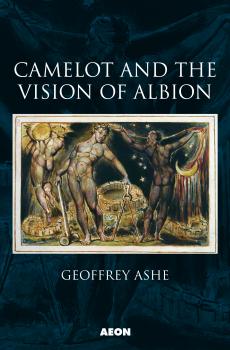Зарубежная психология
Различные книги в жанре Зарубежная психологияWisdom from the Couch
An intelligent and sophisticated volume that applies the wisdom of contemporary psychoanalytic theory and clinical experience to everyday life.Complex psychological dynamics are made accessible as the reader comes to understand how the unconscious mind works in terms of growth, love, work, finding direction, and making peace with ourselves and one another.A timely and much-needed alternative to quick-fix self-help models.Illustrates how the unconscious mind works through the use of timeless myths, spiritual traditions, literature, popular culture, and the author’s experiences as a clinical psychologist and psychoanalyst.Dr. Kunst writes the popular blog, A Headshrinker’s Guide to the Galaxy, for the Psychology Today website.
Circles of Power
Take the Next Step… Clear away the outdated clutter that has obscured the power and beauty of the Golden Dawn magical system and feel for yourself the difference these techniques can make in your life. Explore dozens of new rituals developed from the fragments and core documents of the greatest Magical Order in the Western world. Step out of the darkness and into the light of understanding.John Michael Greer writes in a lucid and entertaining manner, revealing previously unknown aspects of the magical rites of the Golden Dawn. Warm and engaging, Circles of Power revitalizes Western magic by removing the unnecessary rhetoric and obscure jargon. Everything is plainly and simply explained and all the information you need to begin working within this magical system is presented in a clear and concise manner. Filled with the fruits of personal experience and insights derived from in-depth research, Circles of Power is the next best thing to actually joining a Hermetic lodge.
The Academy of the Sword
The most detailed and comprehensive treatise on swordsmanship ever written, Gerard Thibault's Academy of the Sword offers an extraordinary glimpse into a forgotten landscape of ideas, in which Pythagorean sacred geometry illuminated the lethal realities of rapier combat to create one of the Western world's only thoroughly documented esoteric martial arts. Translated by the widely respected occultist and scholar John Michael Greer, this stunningly illustrated and precisely detailed manual of Renaissance swordsmanship is a triumphant document of Renaissance culture-as well as a practical manual of a martial art that can still be studied and practiced today.
Paths of Wisdom
Acclaimed as an instant classic on its original publication and eagerly sought by students of magic ever since, Paths of Wisdom is a comprehensive introduction to the theory and practice of the magical Cabala, as practiced in the Hermetic Order of the Golden Dawn and most other contemporary Western occult traditions. Engaging and accessible, yet packed with material found in few other books, it illumines the Cabalist underpinnings of today's Hermetic magic as never before.From the fundamentals of Cabalistic philosophy, through a detailed examination of the Spheres and Paths of the Tree of Life, to the magical disciplines that bring the symbolism to life as a potent toolkit for self-knowledge and esoteric attainment, Paths of Wisdom is your guide to the principles and practices of the magical Cabala.
Camelot and the Vision of Albion
When archaeologists dug up the hill of Cadbury in Somerset, the reputed site of King Arthur's Camelot, thousands of visitors came to watch. They never saw anything resembling the Camelot of romance. Yet they kept coming, year after year.Why does Arthur fascinate? In this book, the secretary of the Cadbury project (himself an authority on the legend) looks for an answer. Drawing on varied researches, and on the insight embodied in William Blake's symbol of the shadowy 'Giant Albion' behind Arthur, he plunges into the psychological depths that underlie the tale of the enchanted King, his city Camelot, his mysterious departure to Avalon, his promised return.The enquiry starts from the solid facts of Cadbury. But it opens vistas on a strange world of gods and mortals and immemorial yearnings. The same universal dream that created the legendary Arthur is shown reappearing through many centuries, inspiring many thinkers: Blake himself; Virgil, Confucius, Rousseau, Gandhi; even such supposed rationalists as Robert Owen and Lenin.All the paths converge on a central problem of the human condition, which, the author suggests, must be solved if mankind is to achieve a workable humanist philosophy. It turns out that Arthur remains startlingly relevant: that the prophecy of his return has a serious meaning.
The Wisdom of Wildflowers
Heather Robbins lived twenty-five years on a cattle ranch on the Canada prairies, and spent many hours outside walking through fields and pastures, hills and valleys. She found beauty and inspiration in everything that she saw. Mother Nature reached into her soul and brought her to a place of complete belonging and peace. Wildflowers composed their sweet songs, sweeping Heather away into a world of inspiration, and they gently reminded her of what was possible, motivating her to live her life with hope, strength, and grace. Each wildflower whispered their lessons, guiding her to look inside herself with love and understanding, forgiveness and gratitude. It is Heather's hope that as women journey through these pages, they will be inspired to open up their hearts to hear these divine messages, and discover the beauty and grace that exists within us all.
Whether to Kill
What drives some to violence against the state while others, living in the same place at the same time, turn to nonviolent resistance? And in this age of Islamist terrorism and Islamophobia, does the practice of Islam encourage violence? Structural explanations of violence fail to answer these questions. In Whether to Kill , Stephanie Dornschneider applies the methodology of cognitive mapping to study the beliefs that motivate individuals to take up arms or engage in nonviolent activism. Using a double-paired comparison with control groups, Dornschneider conducted extensive ethnographic interviews with violent and nonviolent Muslims and non-Muslims in both Egypt and Germany, speaking with them about their lives and contexts and what drove them to resist the state. After coding their responses into cognitive maps, which make visible the connections between an individual's beliefs and decisions for behavior, Dornschneider used a computer model to analyze the huge number of possible factors driving people to choose or not choose violence, eventually identifying ten reasoning processes by which violent individuals can be differentiated from nonviolent ones. Whether to Kill takes a new approach to understanding terrorism. Through first-person accounts of those involved in both violent and nonviolent action against the state—from members of groups as diverse as the Muslim Brotherhood, al-Jihad, the Socialist German Student Union, and the Red Army Faction—then analyzing that data via cognitive mapping, Stephanie Dornschneider has opened up new perspectives on what drives people to—or away from—the use of political violence.
Reflected Sounds
Music in therapy allows a sensual awareness of overlapping inner and outer spaces. This in turn allows thoughts to wander and linger over objects of interest that both contain the past and make possible the present, that are associated with amiable beginnings as well as leaving open what the future will bring. Due to these processes we do not only live once. Everything is reverberating, says Erich Fried, and continues: “and everything that I say about this echo, echoes and echoes“. This all happens within a further space, namely a social one that is able to maintain all social structures despite its fragility.
The case studies presented by the different music therapists in this volume – previously in German and now in English translation – allow the reader to take a journey through very different spaces and to engage in a process in which their own presence develops through the resonance of events. Starting from common points of reference, that is, a psychoanalytic understanding of therapy and the use of music in individual therapy with patients suffering from severe and in some cases prolonged psychiatric disorders, the authors select that form of presentation which appears best suited for the respective case by alternating between descriptions, reflections, and explanatory or deeper theoretical considerations, by retrospectively organizing the material, by structuring, summarizing, or highlighting it, and – in specific cases – by including examples in the form of sheet music for the sake of illustration.
With contributions by Jos de Backer, Maria Becker, Ingo Engelmann, Susanne Metzner, Inge Nygaard Pedersen, and Gitta Strehlow









